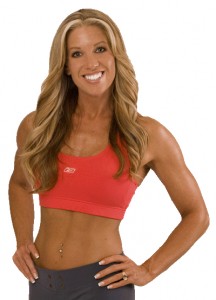No need to cover your eyes this week. I have gained more weight and cannot tie my shoes again. The picture is not a pretty one. I certainly enjoyed last week’s chance to see some shoes with “Laces” on them. Today, back to flip-flops and loafers. I have decided that I cannot reward myself with one of my favorite libations until I am sub, 200 pounds. I have 27 pounds or approximately 27 weeks until I’ll allow myself a cold frosty, 16 ounce imported. This reward may come sooner and is a great incentive tool.
I have given up very little in the diet department and ‘Nutrition’ seems more important than I remember from the days of Protein Shakes and overdoses of Creatine and Hydroxy-Cut in the 80’s. We wanted to hear more from the experts on exactly what proper nutrition is since that catch phrase seems to be in all the brochures…next to the smiles of starving happy people who seem to like exercising. Proper nutrition and diet cannot be as easy as the “Special K’ diet or eating bacteria in dessert flavored yogurts….or can it?
Last week’s Question:
It is agreed that a proper diet is what is needed to reach fitness goals, Tell us what is a proper diet, in your opinion?
Expert Answers:
Teryl Worster
What is a healthy diet? That question has been debated for many years. A healthy diet, we are finding out looks different for each individual. We have gone the cookie cutter route for many years and though we have a wonderful food pyramid, I have discovered that depending on the person, their hormonal balance or how their body tolerates glycogen, that a healthy diet will vary. It is safe to say for most people that a healthy diet would be a diet that includes a nice balance of proteins, vegetables and carbohydrates. If one were to look at their plate and identify at least 3 vibrant colors, they are most likely getting plenty of vitamins and minerals. A protein source the size of your palm gives you the proper amount of protein in most cases, though most people do not get an adequate amount of protein in a day. Starchy carbohydrates, even the good ones are to be limited in any diet that is considered healthy, but for anyone with any type of metabolic disorder, the starchy carbohydrates can cause trouble. I like to see people go by the way of balance and proper portion control in general, that will always lead to a healthier place.
Owner/ Fitness Director
678.450.1570
www.bodysanctuaryinc.com/blog/

ShariFitness
My diet has certainly evolved over the years. 90% of the foods I eat I prepare and are organic. I’m also eating very little or no grains and focus more on lean proteins, healthy fats, fresh fruits and vegetables.
I don’t expect everyone to eat like I do, however, for most people, cutting out fast food and drinking soda is a step in the right direction towards eating healthy. It’s all about taking small steps towards eating foods that nourish your body and are nutrient rich. When making food choices, ask yourself if the calories you’re choosing are quality calories or empty calories. That will help you make better food choices.
Certified Fitness Professional
Certified Fitness Nutritionist
Natural Health Advocate
http://www.fittalknews.com
http://facebook.com/ShariFitnessFanPage
http://twitter.com/ShariFitness
http://bit.ly/SubscribeFitTalkNews
Skype: sharifitness
“Proper Diet” in my opinion depends on what the person is eating for. We should be fueling our bodies, so the gas we choose really depends on the kind of car we are driving and type of race we are running. This means if someone was dieting, the type and amount of fuel would be different than someone fueling for bodybuilding or running a marathon.
Although there are many different types of people and goals, like there are many different types of fuel and cars, the average person probably should be most like a hybrid, using both fuel and battery per say. The fuel would be the food they eat. Hybrids are not gas guzzlers, they sip on the gas just as we should “sip” on our fuel, eating 5-6 small meals a day. Next, they need to use stored energy, like hybrids use their battery for power. This means, if we are trying to lose weight, we should be using our fat stores for energy throughout the day, in addition to the fuel we eat.
The same way bad gas can make your car run rough, the choices of foods can greatly affect your body’s performance. I like to see our dieters on what I refer to as a 33/33/33 diet. This means they are getting a third of their calories from each substrate – carbs, proteins and fats. Normally when people are the standard 1,200 calorie diet, they are watching calories so closely they forget they should be fueling their body and they often end up eating 1200 calories of nothing.
For instance, dieters tend to eat for taste not nutrients – looking to eat as much volume but as few calories as possible. Salads, celery sticks and sugar-free jello seem to pop up a lot of my dieter’s diet journals and I always think to myself “no wonder they are hungry! They are eating a lot of food, but they need a lot more fuel.”
The only way to make sure we are actually giving our bodies something it can run on is to look at the substrates in each food. Many online diet journals have pie graphs so you can see if you are getting the proteins, carbs and fats you need. If a dieter is on a 1,200 calorie diet, this type of diet would have them getting 400 calories from each substrate. Since there is 4 calories in a gram of protein or carbohydrate and 9 calories in a gram of fat, the dieter should be eating 100 grams of protein, 100 grams of carbohydrates and 44 grams of fat per day.
In my experience, the protein is always what is lacking most. Once you tackle protein, then the next issue is the type of carbohydrates people are eating. Many people think that carbs are bad, but it’s not so much as they are bad as we tend to eat the wrong types of carbohydrates. Restaurants and food products use cheap carbs as fillers – and although they temporarily fill us up, they permanently fill us out! Processed carbohydrates like breads, cereals, potatoes and foods high in sugar are also high in calories and won’t keep us fueled for very long. Low-glycemic carbs like whole grains, oats, bran, nuts, quinoa, fruits and vegetables, just to name a few, keep your blood sugar level, metabolism revved, give you a lasting energy, and keep you filling full for a longer period of time.
Lastly, dieters often go for fat-free items when they would be better off eating foods low in fat. Good fats like nuts, olive oil, fish oils and avocados help slow down digestion, keeping us fuller longer. In addition, the longer the food is in our stomach, the more nutrients we absorb.
There are so many components to what many people would consider a healthy diet, and I am not even going into micronutrients here. I believe America’s obesity problem needs to be tackled first and that starts with calories in versus calories out. Once everyone gets that down, they can work on getting the right substrates like I’ve mentioned here. Then, the next thing would be to explore vitamins, nutrients and supplements once they have gotten control of their weight. All in all, there will always be something for us all to learn and something to improve on.
So although I don’t personally have one definition for the “proper diet”, I believe eating a balanced diet where you are getting equal amounts of protein, carbs and fats are definitely a great place to start!
Next Week’s Expert Question:
What are some secrets to managing muscle fatigue, pain, and recovery for older bodies as their fitness routines get more challenging?









What great answers from everyone!The most important thing to remember is to never give up when it comes to making those healthy lifestyle changes. It is consistancey that really wins out in the long run.